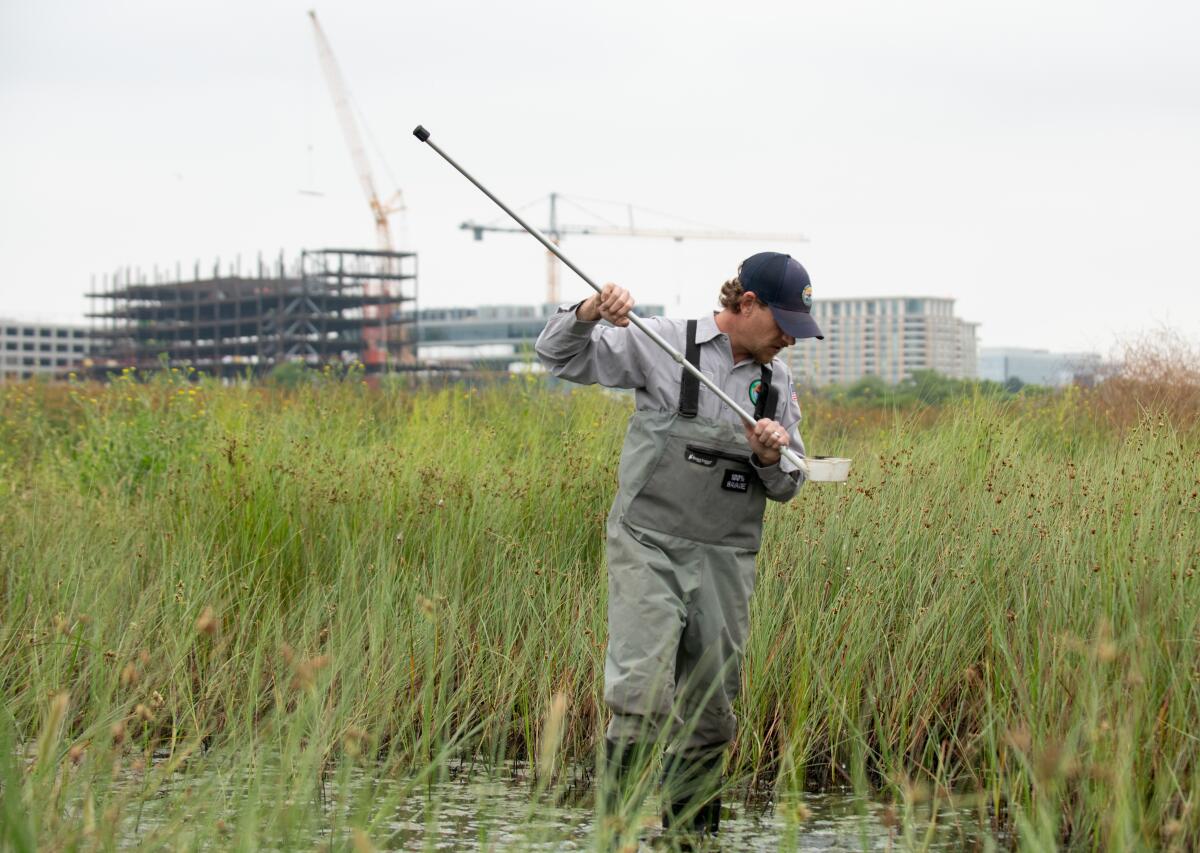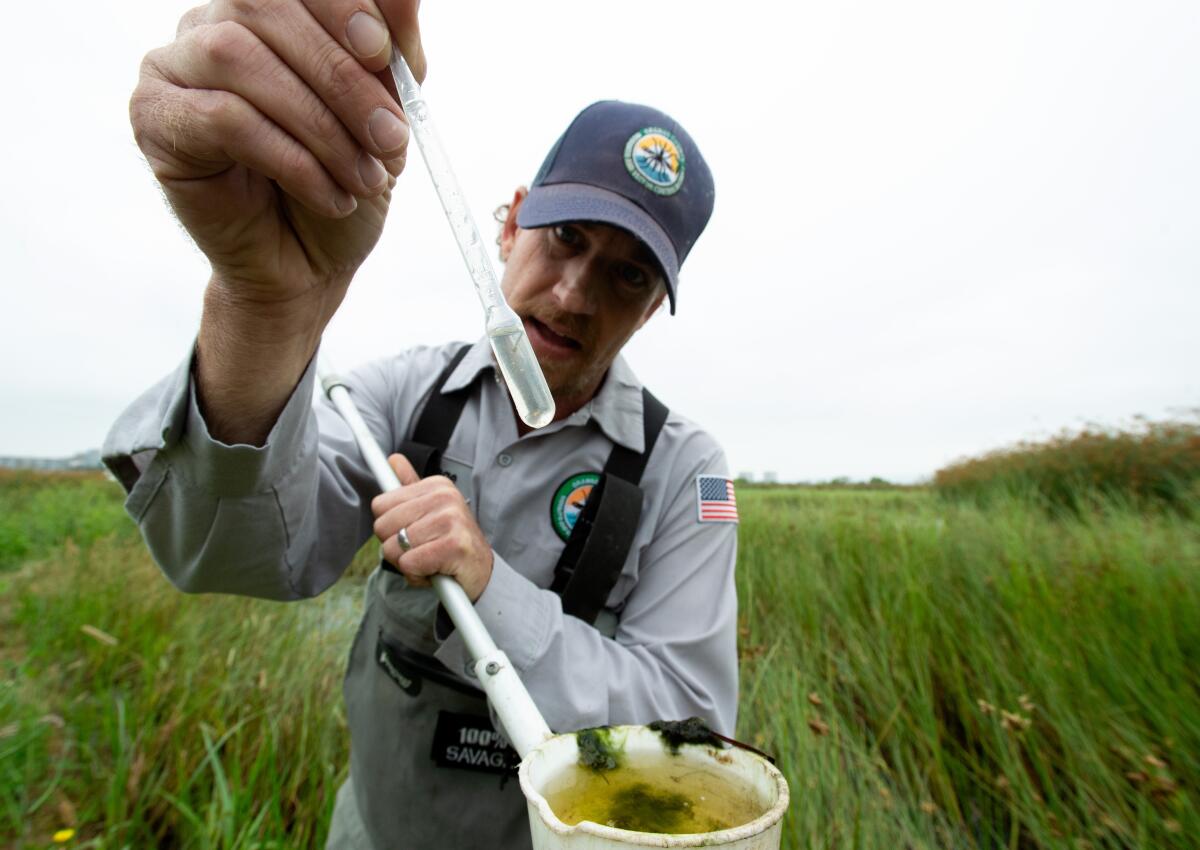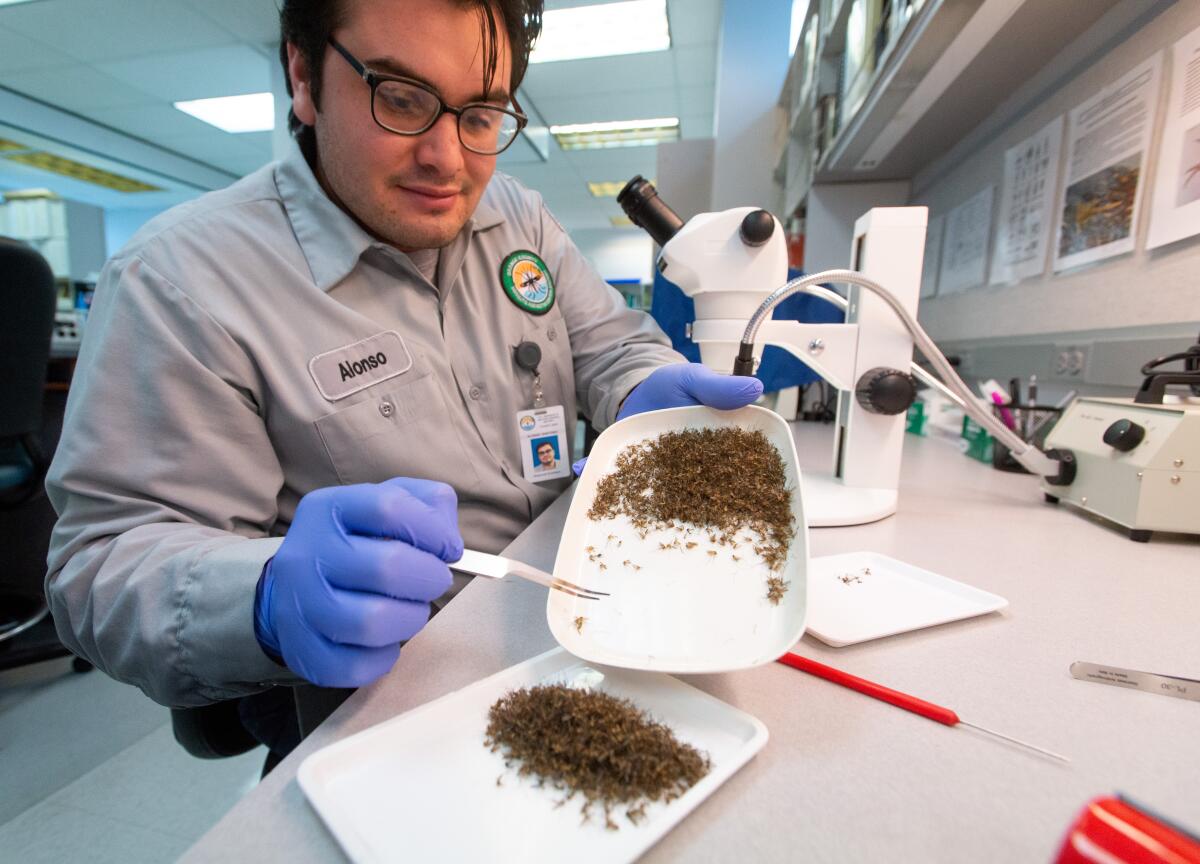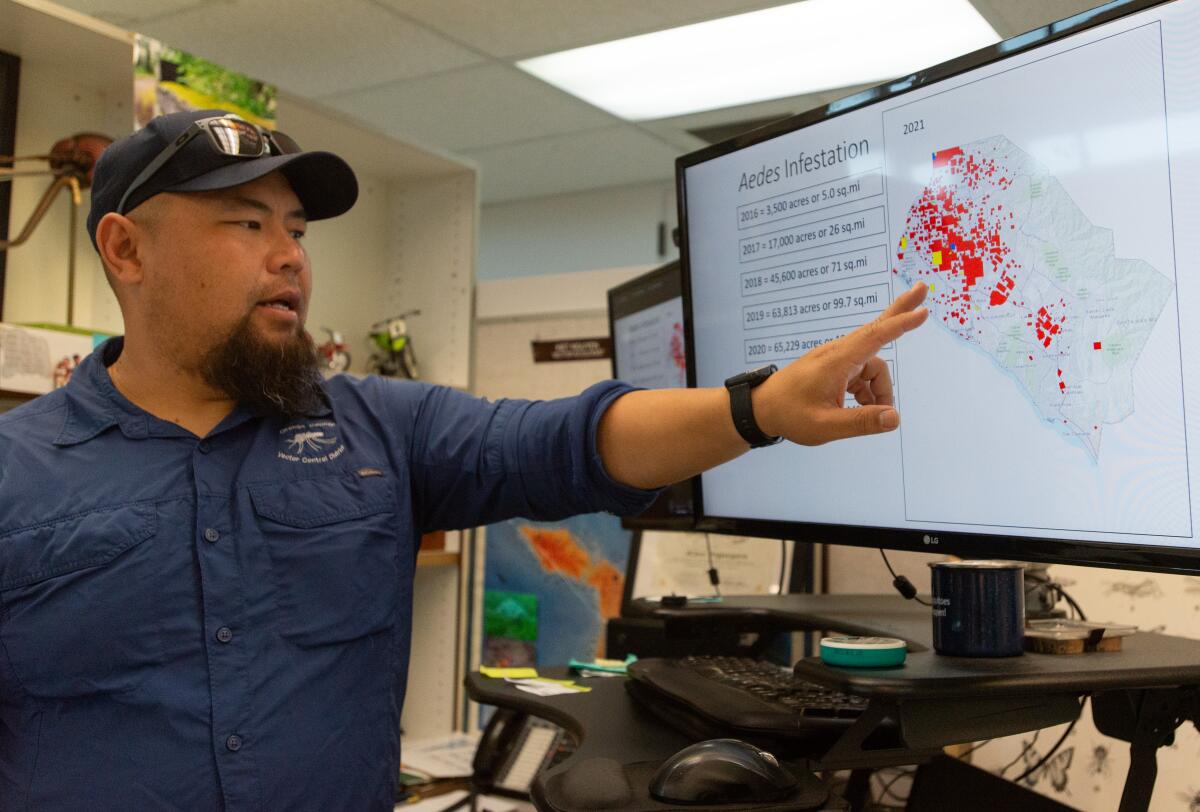O.C. Mosquito and Vector Control takes a bite out of the buzzing pest’s population

- Share via
The whining buzz of a mosquito circled John Savage Wednesday as he loaded the hopper of a fogging machine with VectoBac, an insecticide formulated specifically for the pests. He started its motor and strapped the device onto his back, then waded waist-deep around bundles of reeds in a marsh just north of UC Irvine, between Campus Drive and Highway 73.
The inspector for the Orange County Mosquito and Vector Control District said he loves his job, and didn’t complain about the pint or so of murky water he dumped out of each boot after treating just a small portion of the roughly 50-acre space he was tasked with handling. But he did lament the temporary loss of a drone they had only recently started using, which would have allowed him to dust most of the marsh he was in within just two or three hours.
That’s especially because he and his team are expecting a massive boom in the mosquito population this summer compared to previous years. A historically wet winter in Southern California revitalized habitats for numerous species across the region, including most everyone’s least favorite flying, blood-sucking bugs.
“It’s awesome to come out here and see the birds come back, hear them chirping again in the mornings,” Savage said. “There’s so much more water here now, which I love, but so do mosquitoes. And you’re already starting to see their larvae out there, swimming near the surface.”

Just one of five traps set in the marsh caught about 2,700 mosquitoes last week, Savage said. A count of 300 is considered above average, especially this early in the summer.
A team of 12 staff set traps and monitors the mosquito population year round to screen for the presence of diseases commonly spread by the pests, according to Amber Semrow, O.C. Mosquito and Vector Control’s director of scientific technical services. That’s augmented by an additional 11 seasonal employees during the summer.

The culex family of mosquitoes are the most common variety in Orange County and a common vector for West Nile virus. As of Wednesday, there had been no reports of local transmission in the area, O.C. Mosquito and Vector Control Ecologist Kiet Nguyen said.
But a few cases inevitably crop up each year, Nguyen said. When that does happen, the district is prepared to rapidly pinpoint the location of the transmission and respond with teams to suppress the nearby mosquito population.

Previously, the tracking of mosquito-borne disease transmission was conducted in a haphazard manner, with teams spreading VectoBac into broad swaths of residential areas for weeks. But Nguyen developed a grid system to divvy up the county and used data reaching back to 2018 to streamline the way the district approaches confirmed reports. It now takes their team only about eight days to find and treat a hot spot.
Teams regularly treat parks, wildlife preserves, industrial areas and other large open spaces that might harbor breeding grounds. But the district will typically only spread insecticide in residential neighborhoods as a last resort, after a disease has been detected, Nguyen said.

That means checking the spread of aedes aegypti, an invasive species of mosquito that prefers to spawn in water trapped by the leaves of plants or tiny containers, may largely fall on the shoulders of residents. They can carry Zika virus and Dengue fever, feed during daylight hours and can thrive for their entire life cycle in the p-trap of an unused drain, unattended containers, a pet’s dish that has been left out to long or practically anything that can hold a tiny amount of water.
Aedes mosquitoes were native to Asia and quickly began spreading through California well over a decade ago, Nguyen said. But their presence wasn’t confirmed in Orange County until he himself swatted one that bit him while working in the field in 2015.
All the latest on Orange County from Orange County.
Get our free TimesOC newsletter.
You may occasionally receive promotional content from the Daily Pilot.




